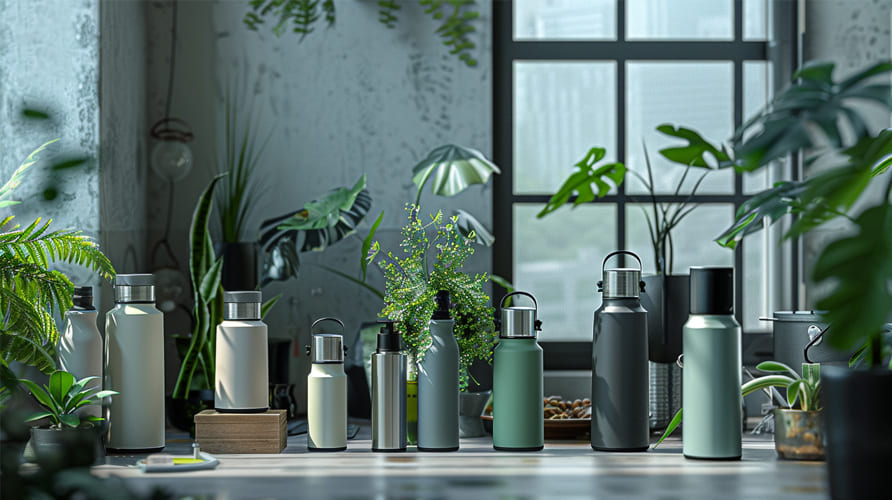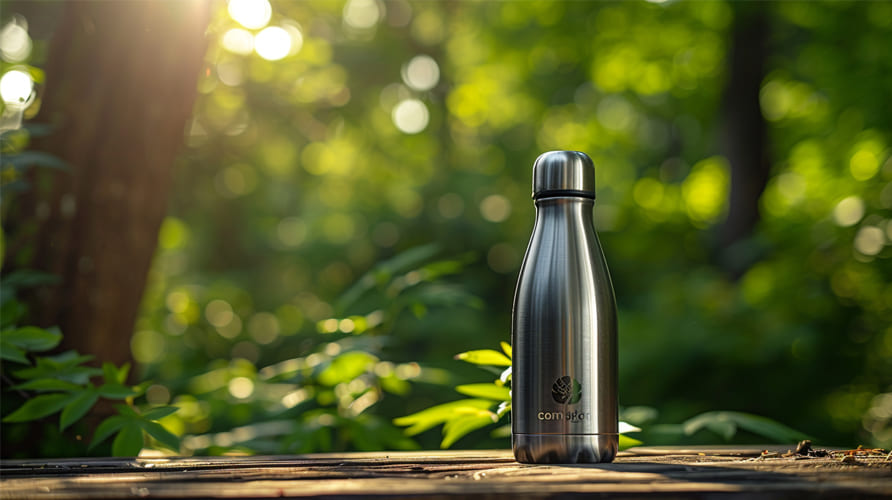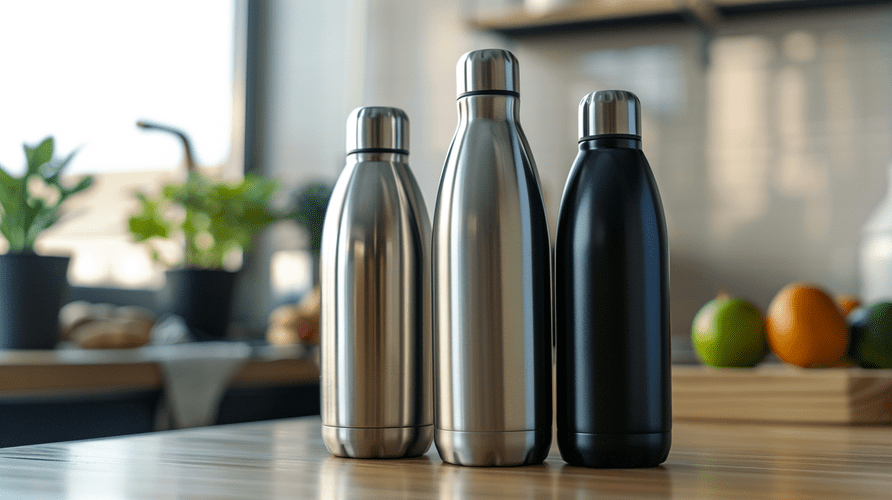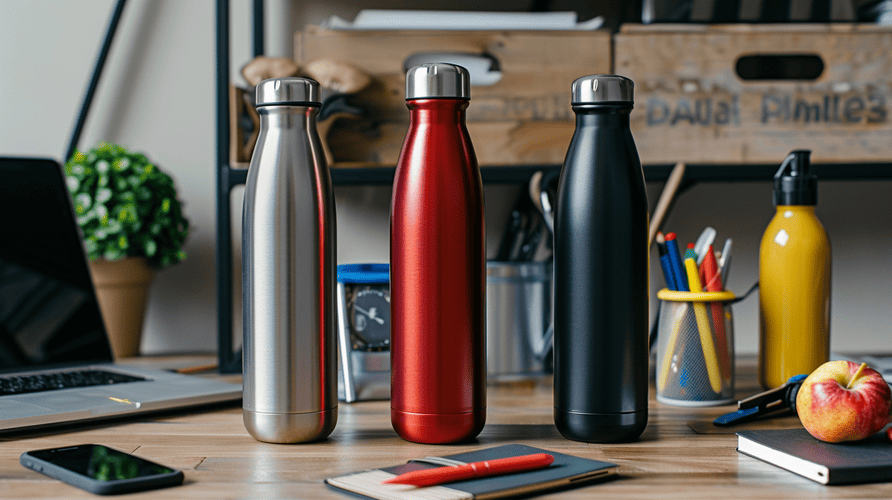Struggling with truly eco-friendly choices? Finding genuinely sustainable products can be tough. You want items that last and are kind to the planet.
The most sustainable water bottle minimizes environmental harm. This involves its materials, production, lifespan, and how it’s recycled. Stainless steel and glass are good material choices.

As a business owner, I, Aries Hua, understand the drive for both quality and sustainability. My company, Icobottle, specializes in stainless steel drinkware. We focus on top-quality, customizable products for B2B clients, mainly in America and Europe. Mark Shenng, a Canadian company owner, is a great example of a client who values quality and competitive pricing. He often sources from China and understands the importance of sustainable choices. This guide reflects the insights I've gained working with clients like Mark.
What is the most sustainable water brand?
Searching for the most sustainable brand? It's less about one name. It’s more about understanding a product's entire lifecycle and material choices.
A truly sustainable brand focuses on durable materials, eco-friendly manufacturing1, and recyclability. Look for transparency in their processes and a commitment to reducing environmental impact.

For B2B buyers like Mark, "sustainable" isn't just a buzzword. It's a core business consideration. When Mark looks for suppliers on Google or at trade shows, he’s not just comparing prices. He’s assessing the long-term viability and environmental credentials of potential partners. His customers in Canada are increasingly eco-conscious. Therefore, the sustainability of the products he imports directly impacts his brand's reputation and profitability. He seeks products that are built to last, minimizing waste. He also looks for suppliers who are transparent about their material sourcing and production methods. This is why understanding the lifecycle of a water bottle is so critical. It's not enough for a bottle to be reusable; it needs to be made from materials that are responsibly sourced and can be efficiently recycled or disposed of at the end of their (hopefully very long) life. This holistic view of sustainability is what separates a genuinely eco-friendly product from one that simply claims to be.
Lifecycle Assessment: A Key Indicator
A product's lifecycle includes everything from raw material extraction to end-of-life disposal. Consider these stages:
- Raw Material Sourcing: Are materials virgin or recycled? Are they abundant or scarce? Stainless steel, for example, is highly recyclable.
- Manufacturing: How much energy and water are used? What kind of waste is produced?
- Transportation: What's the carbon footprint of shipping?
- Use Phase: How durable is the product? A longer lifespan means less frequent replacement and less waste.
- End-of-Life: Is the product easily recyclable? Can it be repurposed?
| Stage | Key Sustainability Question | Example for Stainless Steel Bottles |
|---|---|---|
| Raw Material Sourcing | Are materials virgin or recycled? | Can use recycled stainless steel. |
| Manufacturing | Energy consumption and waste? | Requires energy, but is durable. |
| Transportation | Carbon footprint? | Varies by distance and mode. |
| Use Phase | Durability? | Very durable, lasts many years. |
| End-of-Life | Recyclability? | Highly recyclable. |
Understanding these factors helps procurement officers like Mark make informed decisions that align with their company’s sustainability goals and their customers' expectations.
What is the meaning of eco friendly water bottles?
Feeling confused by "eco-friendly" claims? Many products use this label. But what does it truly mean for a water bottle?
An eco-friendly water bottle is designed for minimal environmental impact throughout its lifecycle, considering materials, production, durability, and recyclability. This means it's not just reusable.

When I talk with clients like Mark, the term "eco-friendly" needs to be clearly defined. It’s not a loose term for us at Icobottle. For Mark, an "eco-friendly water bottle2" must meet several criteria. First, the material. High-quality stainless steel, like the food-grade 304 we often use, is a prime example. It's durable, meaning it won't need replacing quickly, reducing overall consumption. It's also non-reactive, so it doesn’t need a plastic liner that could degrade. Second, the manufacturing process matters. While producing stainless steel requires energy, its longevity and recyclability can offset this initial impact. Mark is aware of the occasional certificate fraud by some suppliers, so he values transparency and verifiable claims about eco-friendly practices. An eco-friendly bottle should also be easy to clean and maintain, ensuring it remains hygienic and usable for years.
Beyond Reusability: Key Features
True eco-friendliness goes beyond just being reusable.
- Materials Used: Sustainable materials like high-grade stainless steel (304 or 316) or glass are preferred. Some eco-friendly bottles might also use biodegradable plastics or recycled materials.
- Production Process: Manufacturers should aim to reduce energy consumption, water usage, and waste during production.
- Durability and Lifespan: A bottle that lasts longer reduces the need for replacements, conserving resources. Stainless steel bottles are known for their durability.
- End-of-Life Options: The bottle should be recyclable. Stainless steel is highly recyclable. Glass is also recyclable. Biodegradable plastics should break down safely.
- Non-Toxic: The bottle should be free of harmful chemicals like BPA. Stainless steel and glass are generally considered safe in this regard.
| Feature | Importance for Eco-Friendliness | Stainless Steel Example |
|---|---|---|
| Material | Renewable, recycled, or highly durable/recyclable | Food-grade 304/316 stainless steel is durable & recyclable. |
| Production | Low energy, water, waste | Energy needed, but offset by lifespan/recyclability3. |
| Durability | Reduces replacement, conserves resources | Can last for many years, very robust. |
| End-of-Life | Recyclable or safely biodegradable | Highly recyclable without quality loss. |
| Non-Toxic | Safe for users and the environment | Does not leach chemicals like BPA. |
For Mark, whose business relies on distributing rebranded water bottles in Canada, these features are crucial. His customers are savvy and demand products that are not only stylish and functional but also genuinely kind to the environment. Choosing bottles made from high-quality, food-grade stainless steel ensures that he is providing a product that is durable, safe, and aligns with the eco-conscious values of his market.
Is it better to drink from a metal or plastic water bottle?
Wondering about metal versus plastic? It's a common question when choosing a reusable water bottle, especially with sustainability in mind.
For reusability and the environment, stainless steel bottles generally outperform plastic. They offer superior durability, recyclability, and often a better user experience without chemical leaching concerns.

From my experience at Icobottle, and in discussions with clients like Mark, stainless steel consistently emerges as the preferred option for reusable bottles, especially for B2B purposes. Mark needs products that reflect quality and sustainability, as his profit model involves rebranding and distributing premium items. While some high-quality reusable plastic bottles exist, stainless steel offers distinct advantages. The longevity of a stainless steel bottle is a major factor. A well-made one can last for many, many years, significantly reducing the need to produce new bottles. This contrasts sharply with many plastic bottles, even reusable ones, which may degrade, stain, or retain odors over time. Furthermore, the end-of-life scenario for stainless steel is more favorable. Stainless steel can be recycled efficiently without a significant loss of quality, contributing to a more circular economy. Plastic recycling, on the other hand, can be more complex, often resulting in downcycling, and not all plastics are widely recyclable.
Comparing Materials: Stainless Steel vs. Plastic
Let's break down the key differences for reusable bottles:
-
Durability & Longevity:
- Stainless Steel: Highly durable, resistant to drops, and can last for years. This means less waste from replacements.
- Plastic (reusable): Durability varies. Some can crack or become brittle over time. They may also scratch, potentially harboring bacteria.
-
Recyclability & Environmental Impact:
- Stainless Steel: Highly and effectively recyclable. Its production is energy-intensive, but its long life and recyclability help offset this.
- Plastic (reusable): Recyclability depends on the type of plastic. Not all are easily recycled, and the process can be less efficient than for metal. Concerns about microplastic shedding persist.
-
Health & Safety:
- Stainless Steel: Generally considered very safe. It doesn't leach chemicals like BPA (Bisphenol A) and doesn't typically require a liner. Food-grade stainless steel (e.g., 304 or 18/8) is standard.
- Plastic (reusable): Look for "BPA-free4" labels. However, there can still be concerns about other potential chemical leaching, especially if the bottle is old, scratched, or exposed to heat.
-
Taste & Odor:
- Stainless Steel: Does not typically retain flavors or odors, especially if cleaned regularly.
- Plastic (reusable): Can sometimes absorb odors or flavors from previous drinks.
-
Insulation:
- Stainless Steel: Often available with double-wall vacuum insulation, keeping drinks hot or cold for extended periods.
- Plastic (reusable): Generally offers poor insulation unless specifically designed with double walls (less common).
| Feature | Stainless Steel Reusable Bottle | Plastic Reusable Bottle (General) |
|---|---|---|
| Durability | Very high, long-lasting. | Varies, can degrade over time. |
| Recyclability | Highly recyclable. | Varies by plastic type, less efficient. |
| Health Safety | Excellent, no BPA, no chemical leaching. | BPA-free options available, other concerns exist. |
| Taste/Odor | Neutral, doesn't retain. | Can retain odors/flavors. |
| Insulation | Excellent with double-wall options. | Generally poor. |
For Mark, who focuses on quality and competitive pricing, stainless steel offers a strong value proposition. While the initial cost might be slightly higher than some plastic alternatives, the extended lifespan, superior performance, and stronger eco-credentials make it a worthwhile investment for his business and his customers. His concern about inefficient communication with suppliers means he needs reliable product features he can trust, and stainless steel's known benefits provide that assurance.
Conclusion
Choosing sustainable hydration means looking beyond a single brand. It means understanding materials, lifecycles, and true eco-friendliness. Stainless steel often leads for durability and recyclability.
-
Discover best practices in eco-friendly manufacturing that can help brands reduce their environmental footprint and appeal to eco-conscious consumers. ↩
-
Explore the benefits of eco-friendly water bottles to understand their impact on the environment and your health. ↩
-
Discover how recyclability plays a crucial role in making products eco-friendly and reducing waste. ↩
-
Learn about BPA-free plastics and their safety implications to ensure you're making healthy choices in your reusable bottles. ↩

